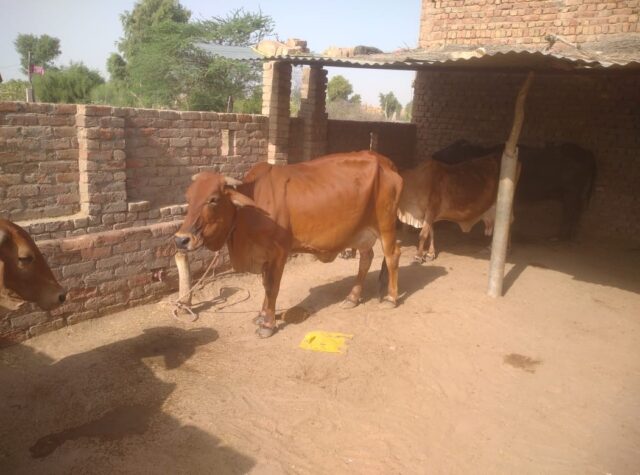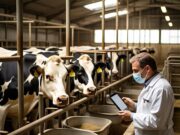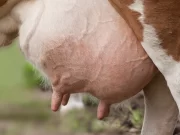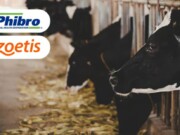
Introduction
Sahiwal is considered to be one of the best milch cattle breeds of India. The breed derives its name from Sahiwal area in the Montgomery district of Punjab in Pakistan. These animals are also known as “Lambi Bar”, “Lola”, “Montgomery”, “Multani”, and “Teli”. The animals are very good for specialized dairy purposes. The breeding tract of the breed is the Ferozpur and Amritsar districts of Punjab and Sri Ganganagar, Hanumangarh district of Rajasthan. A few herds of pure Sahiwal cattle are available around the Fazilka and Abohar towns of the Ferozepur district.
It is the best dairy breed in India. It is a heavy breed, parasite-resistant, and heat-tolerant. Due to their heat tolerance and their good milk production, they have been exported to many countries.
Sahiwal is one of the best dairy breeds of zebu cattle. It is being utilized for the improvement of local stock. Based on the breed survey 2013, the Sahiwal populations were pure 10,92,459 and 37,89,835 graded. The percentage share concerning the total cattle population is 3.23%.
Physical characteristics of Sahiwal Cattle
Sahiwal has a color range of reddish-brown to red, with varying amounts of white on the neck, and the underline. Coming to the male breeds, the color darkens towards the head, neck, legs, and tail. This breed is also known for drooping ears. The hump is very big, but in the female it is nominal.
- They are very high and long in size.
- Surrounded skin of the umbilicus becomes slack and thick.
- Forehead of this Sahiwal is elevated and head is shot size.
- Horns are thick in strength and small in size.
- Udder is big-sized and hanging.
- Sahiwal’s tail is very long around a touch to the ground level.
- It takes about 3-3.5 years to produce a calf for the first time.
General physical parameters
| Category | Male | Female |
| Height (Avg. cm) | 170 | 124 |
| Body Length (Avg. cm) | 150 | 131 |
| Heart Girth (Avg. cm) | 190 | 164 |
| Weight (Avg. Kg) | 540 | 327 |
| Birth Weight (Avg. Kg) | 22.4 | 20.7 |
Performance
| Category | Average | Minimum | Maximum |
| Age at first Parturition (Avg. Months) | 41.7 | 30 | 50 |
| Parturition Interval (Months) | 15.6 | 13 | 18 |
| Milk yield per lactation (kg) | 2325 | 1600 | 2750 |
| Milk Fat (%) | 4.9 | 4.8 | 5.1 |
Sahiwal Cattle Cost in India
Usually, Sahiwal cow price depends on milk production, age, and health condition. On an average price are Rs. 60, 000 to Rs.80, 000.
Sexual maturity
Heifers should be mated when they reach 2.5 to 3 years of age or when they attain at least 270 kg live weight.
Selection of breeding cattle
Breed/genetic improvement is important to Sahiwal farmers as it can enhance the performance of their herds, therefore, benefiting individual farmers due to increased productivity and profitability. Breed improvement occurs when the breed value of a Sahiwal herd is improved through selection. The improvement has the potential to;
- Improve specific traits/values of a herd including milk, carcass, growth, fertility, coat color, and resilience.
- Improve overall productivity and profitability.
- Assist in meeting market requirements.


Selection of Sahiwal breeding stock
Breeding stock is a group of Sahiwal males and females. Selection is the process of preferring certain Sahiwal cattle to be parents of future calves while removing others. Selection is an important tool for improving preferred Sahiwal cattle traits. Preferred Sahiwal traits;
- Coat color (reddish-brown)
- High milk yield
- Fast growth rate
- High fertility
- Large body size
- Tolerance to diseases and drought
Tips on good Sahiwal breeding practices
- Chose the best cows and bulls to be parents of the next generation.
- Mate only chooses parents when they are healthy and properly fed.
- Replace or exchange bulls every two-three years.
- Avoid mating related individuals.
- Use appropriate reproductive technology.
- Monitor and maintain breeding records.
Global distribution
Sahiwal is considered the best dairy breed in the Indian subcontinent. It is being utilized widely in many warm humid countries of the world for improvement of local stock or initial crossbreeding of indigenous stock before undertaking to upgrade with European breeds. The Sahiwal breed arrived in Australia via New Guinea in the early 1950s where it was initially used as a dual-purpose breed. It played a valuable role in the development of two Australian tropical dairy breeds, the ‘Australian Milking Zebu (AMZ)’ and the ‘Australian Friesian Sahiwal (AFS)’. Sahiwal cattle are now predominantly used in Australia for beef production, as crossing high-grade Sahiwal sires with European breeds produced a carcass of lean quality with desirable fat cover.
The contribution and adaptability of Sahiwal in rural development are well documented in Kenya, Sri Lanka, Jamaica, Guyana, Burundi, Somalia, Sierra Leone, Nigeria and several ecological zones of Africa, the West Indies, and many Latin American countries. A new breed called ‘Jamaica Hope’ has evolved using Sahiwal x Jersey crossbreds.
Conclusions
Nowadays governments prefer to increase indigenous cattle stock, so the Sahiwal breed may be useful for grading up stock with high scorer Sahiwal germplasm.
About the corresponding author

Dr. Sudesh Kumar
B.V.Sc. & A.H., M.V.Sc.
(Animal Biotechnology, Gold Medal)
Senior Research Fellow,
National Centre for Veterinary Type Cultures,
ICAR-NRC on Equines
Hisar, Haryana, India-125001
1*Sudesh Kumar, 2Suvidhi, 3Upender, 4Taruna Bhati
1*Senior Research Fellow, National Centre for Veterinary Type Cultures, ICAR-NRCE, Hisar, Haryana, 125001
2Senior Research Fellow, ICAR-National Research Centre on Equines, Hisar, Haryana, 125001
3M.V.Sc. Scholar, Division of Veterinary Public Health & Epidemiology, ICAR-Indian Veterinary Research Institute, Izatnagar, U.P.-243122
4Assistant Professor, Department of Veterinary Microbiology and Biotechnology, College of Veterinary and Animal Science, Bikaner, Rajasthan- 334001



















